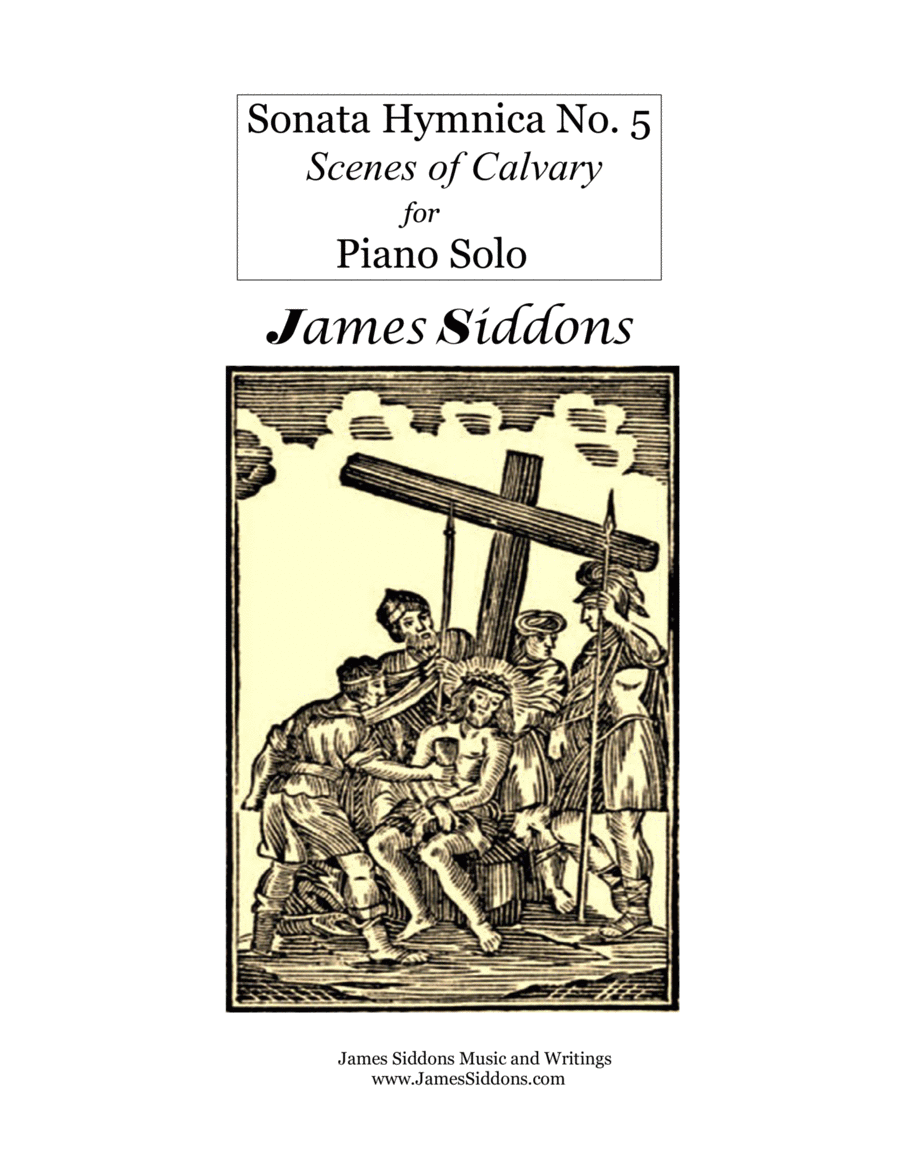Piano Solo - Level 3 - Digital Download SKU: A0.972672 Composed by James Siddons. Christian,Concert,Contemporary,Easter. Score. 17 pages. James Siddons Music and Writings #6671707. Published by James Siddons Music and Writings (A0.972672). Sonata Hymnica No. 5 has the subtitle Scenes of Calvary. Landscape paintings and printed illustrations of the Cross of Calvary were ubiquitous in Christian literature in the late 19th century, so it not surprising that allusions to such art are found in the texts of hymns. The three hymns heard in Sonata Hymnica No. 5 all evoke some sense of seeing, in a spiritual way, the scene of the Crucifixion. Sonata Hymnica No. 5 opens with a sturdy and rugged statement of When I Survey the Wondârous Cross, written by Isaac Watts in 1707. This poem continues: On which the Prince of Glory dyâd, . . . See from His Head, his Hands, his Feet, Sorrow and Love flow mingled down! In the United States, music educator Lowell Mason (1792-1872) composed a tune in 1824 for singing Wattsâ hymn. Named HAMBURG tune, it was an adapted form of some Gregorian chant in Church Mode I. This combination of poem and tune became very popular; so much so, that by the 1880s, elaborations of it appeared in print. The most enduring is the pairing of Wattsâ poem and Masonâs tune with a simple camp meeting song, At the Cross, to be a refrain. It has the phrases, At the cross, where I first saw the light . . . It was there by faith I received my sight. The centerpiece of Sonata Hymnica No. 5 is the tune TOPLADY, the usual tune for singing Rock of Ages. This tune was composed in 1830 by Thomas Hastings (1784-1872), an associate of Lowell Mason in New York. He wrote hymns and hymn tunes, published hymnals, and worked tirelessly to elevate choral singing in churches. Hastings indicated that he intended his tune for singing Rock of Ages by naming it after the author of the hymn-poem, the English pastor Augustus Toplady (1740-1778). The Rev. A. B. Grosart wrote in a memorial that Toplady was no poet or inspired singer, but an impulsive, rash-spoken, reckless preacher who could nonetheless picture vanishing gleams of imaginative light in his hymnic verses. A better impression was gained by poet A. C. Benson (1862-1925), who, upon hearing Rock of Ages sung at William Gladstoneâs funeral at Westminster Abbey in 1898 --- a rare State funeral attended by several members of the British Royal family --- wrote, To have written such words which should come home to people in moments of high, deep, and passionate emotion . . . there can hardly be anything worth doing better than that. This high compliment came from the poet who, a few years later, would write the words of Elgarâs Coronation Ode for King Edward VII and Queen Alexandra. A camp meeting song, a rash-spoken English pastor, two American music educators, a State funeral at Westminster Abbey --- such is the wide world of influence and inspiration of these three Scenes of Calvary.
